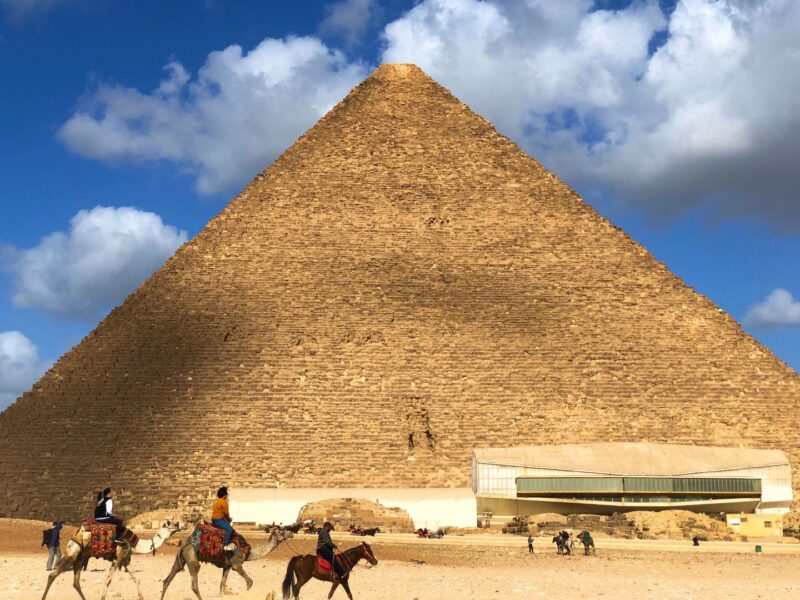The land of the pharaohs in ancient Egypt has captivated the imagination of people worldwide for centuries. Known for its mysterious tombs, majestic pyramids, and colossal temples, this ancient civilization’s architectural marvels are a testament to the brilliance and innovation of its people. Steeped in rich history and fascinating culture, these landmarks have stood the test of time, continuing to inspire awe and intrigue in the hearts of visitors from across the globe. Learn more about these 10 timeless famous landmarks in Egypt that have left an incredible mark on the tapestry of human history.
The Great Pyramids of Giza
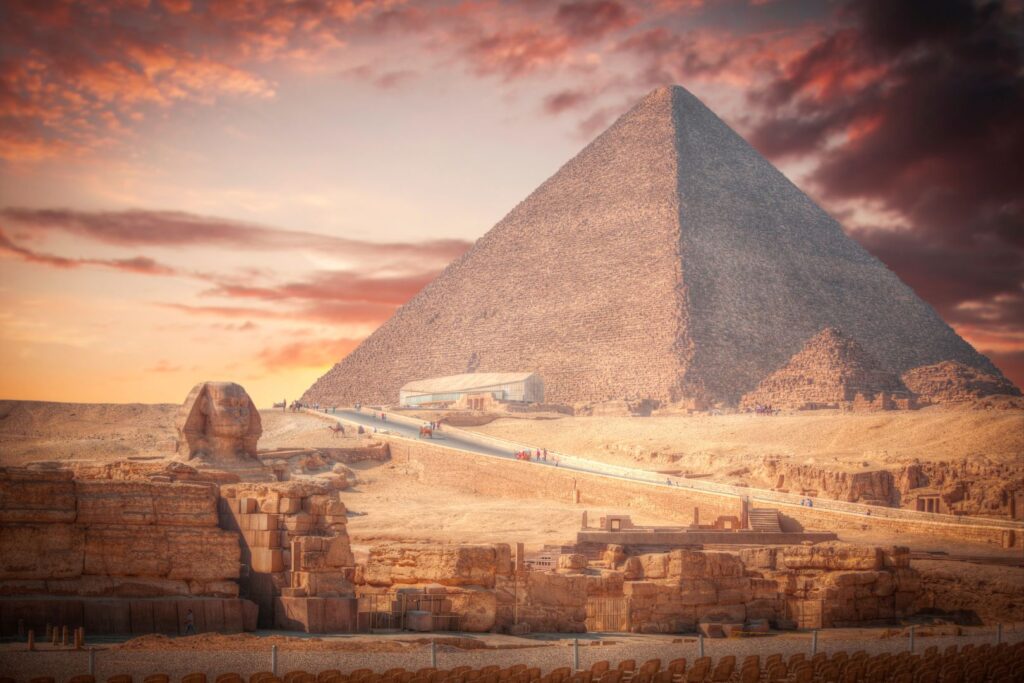
The Great Pyramids of Giza are among the most iconic landmarks in the world. Built during the Fourth Dynasty of the Old Kingdom in ancient Egypt, they stand as a testament to the ingenuity and engineering prowess of the ancient Egyptians.
Located in Giza near the bustling city of Cairo, this complex of pyramids includes the pyramid of Khufu, the pyramid of Khafre, and the pyramid of Menkaure. These magnificent structures, built over 4,500 years ago, are a true marvel of ancient architecture.
They were originally built as tombs for the pharaohs and their consorts, and were filled with treasures fit for a king. The pyramids served as a symbol of the pharaoh’s power and were intended to protect the pharaoh’s body and soul after death.
Today, the pyramids remain an important cultural and historical landmark, attracting millions of visitors from around the world and shedding light on the legacy of one of the world’s most fascinating ancient civilizations.
The Sphinx
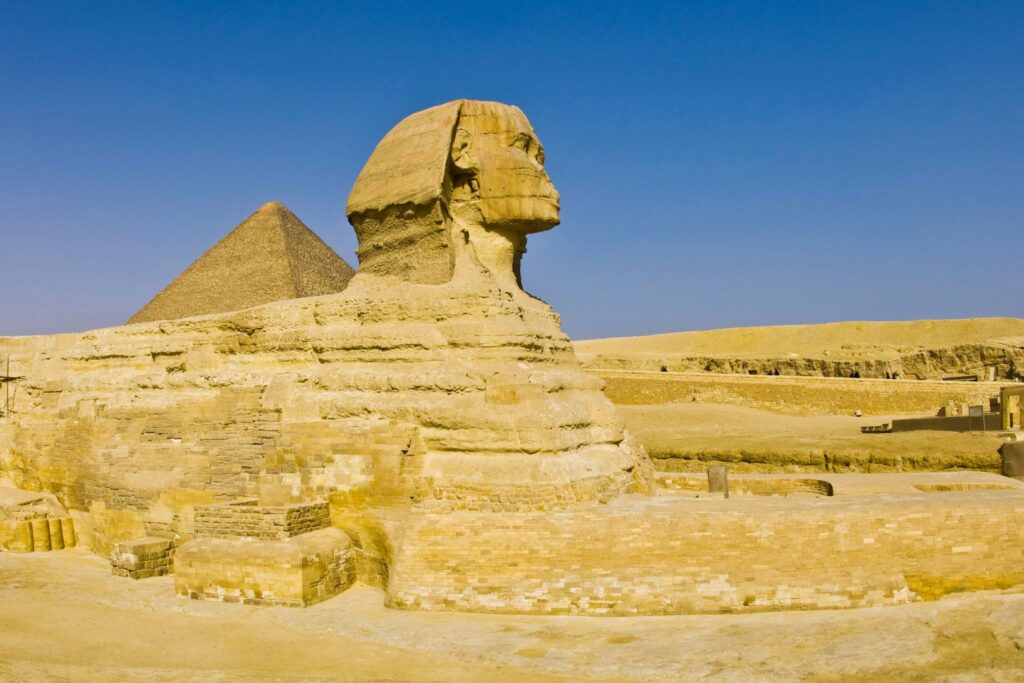
The Sphinx, a colossal limestone statue stands at a height of 66 feet and spans a length of 240 feet long, making it an awe-inspiring sight to behold. It is located on the Giza Plateau, just a short distance away from the pyramids of Khufu, Khafre, and Menkaure.
The Sphinx is notable for its unique combination of a lion’s body and a human head, which is believed to represent the pharaoh Khafre. As one of the most famous sculptures in the world, the Sphinx is one of the oldest landmarks in Egypt and has been a source of fascination for scholars and visitors alike for centuries.
The Sphinx’s historical significance lies in its connection to the ancient Egyptian religion and its association with the pharaohs, serving as a focal point for worship and offering. It is a testament to the incredible craftsmanship and enduring legacy of one of the world’s most advanced civilizations.
The Valley of the Kings
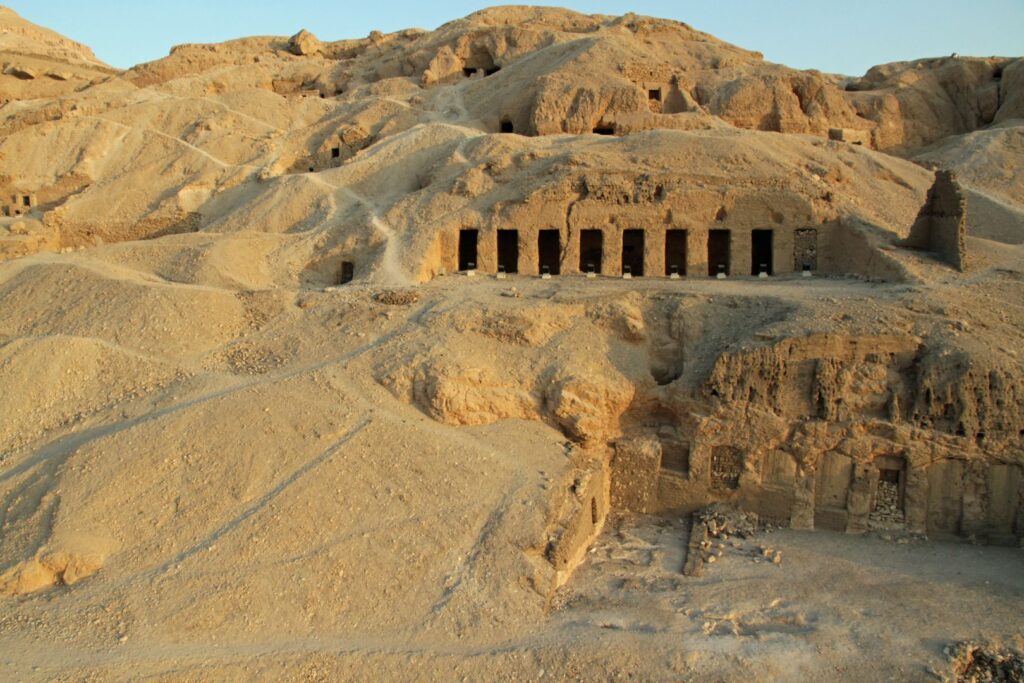
Located on the west bank of the Nile in Luxor, the Valley of the Kings, served as the burial site for Pharaohs and influential nobles during a period spanning nearly 500 years. This area housed tombs for the New Kingdom’s rulers, which included the Eighteenth to the Twentieth Dynasties of Ancient Egypt.
The site contains over 60 rock-cut tombs, most of which contain the remains of pharaohs and their consorts. The tombs were constructed in secret and were filled with treasures that the pharaohs believed would be useful to them in the afterlife. The famous tomb of Tutankhamun, whose treasures amazed the world, were discovered there in 1922.
The positioning for this regal necropolis on the west side of the Nile carries symbolic importance. As the sun god descended (died) in the western horizon before being reborn and revitalized in the eastern horizon, the west consequently became associated with funerary rites.
The Valley of the Kings is a fascinating insight into the elaborate burial rituals of one of the world’s oldest civilizations and a testament to the cultural and architectural advances of ancient Egypt.
Karnak Temple
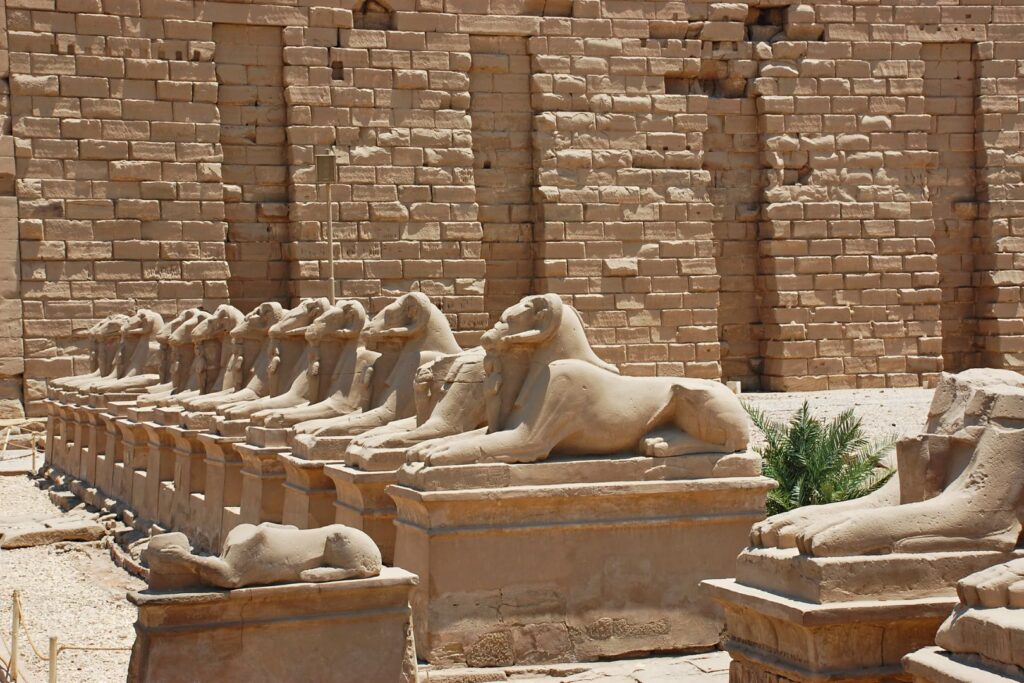
Located in Luxor, Karnak Temple is one of the largest religious complexes in the world covering an area of more than 247 acres of land. The Karnak Temple, constructed in honor of the god Amun, was developed over time by a series of pharaohs, ranging from the Middle Kingdom (1965-1920 BC) to the Ptolemaic dynasty (305 BC to 30 BC).
The temple complex consists of a vast mix of temples, chapels, and other buildings. Karnak is divided into three distinct areas: the precinct of Amun, the precinct of Mut, and the precinct of Montu. Its intricate layout alone surpasses the scale and complexity of any other site in Egypt. The architecture and design are truly magnificent, and the sheer scale of this temple complex is awe-inspiring.
Karnak Temple is important not only for its religious significance but also for its historical significance. It played a vital role in the development of Ancient Egypt, serving as the center of religious power during the New Kingdom period. Today, it stands as a testament to the incredible artistic and engineering abilities of ancient Egyptians.
Abu Simbel
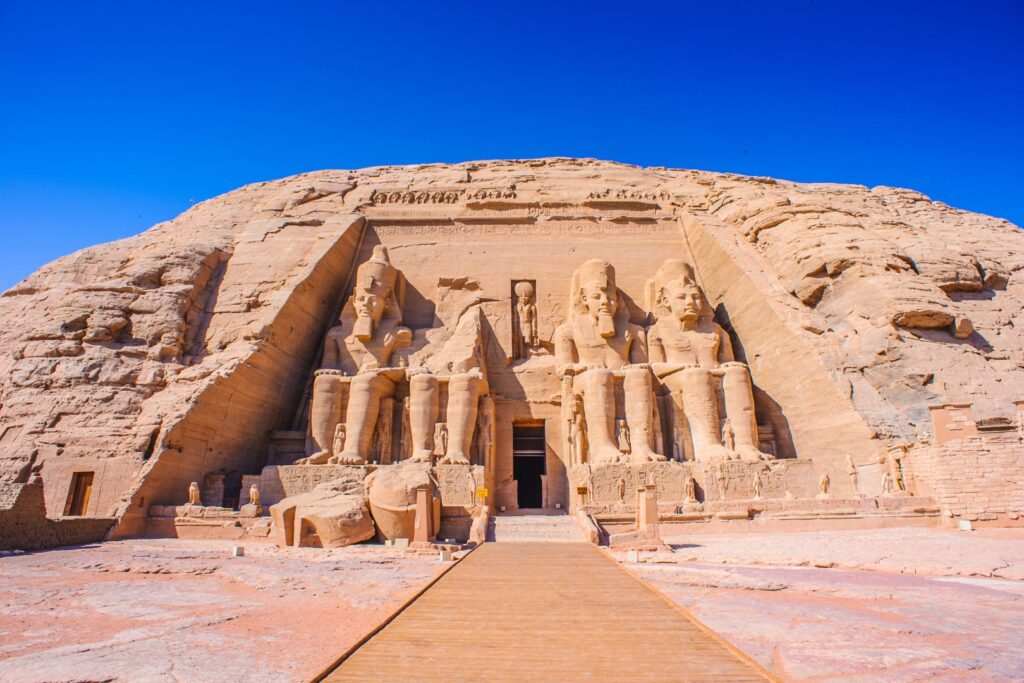
Located in southern Egypt, Abu Simbel is a pair of temples built by Ramses II in the 13th century BC. The temples are known for their massive statues, intricate carvings, and stunning views of Lake Nasser. The temples were carved out of a single rock face on the west bank of the Nile River, between the first and second cataracts of the Nile.
This ancient temple complex is one of the most recognizable ancient sites in Egypt, and it holds great significance in Pharaonic history and culture. It is second only to the Giza Pyramids in renown, and it is dedicated to Ramses II (The Great Temple) and his wife, Queen Nefertari (The Small Temple). The temples were built as an expression of devotion, and they highlight the importance that the Egyptians placed on their faith and beliefs.
Luxor Temple
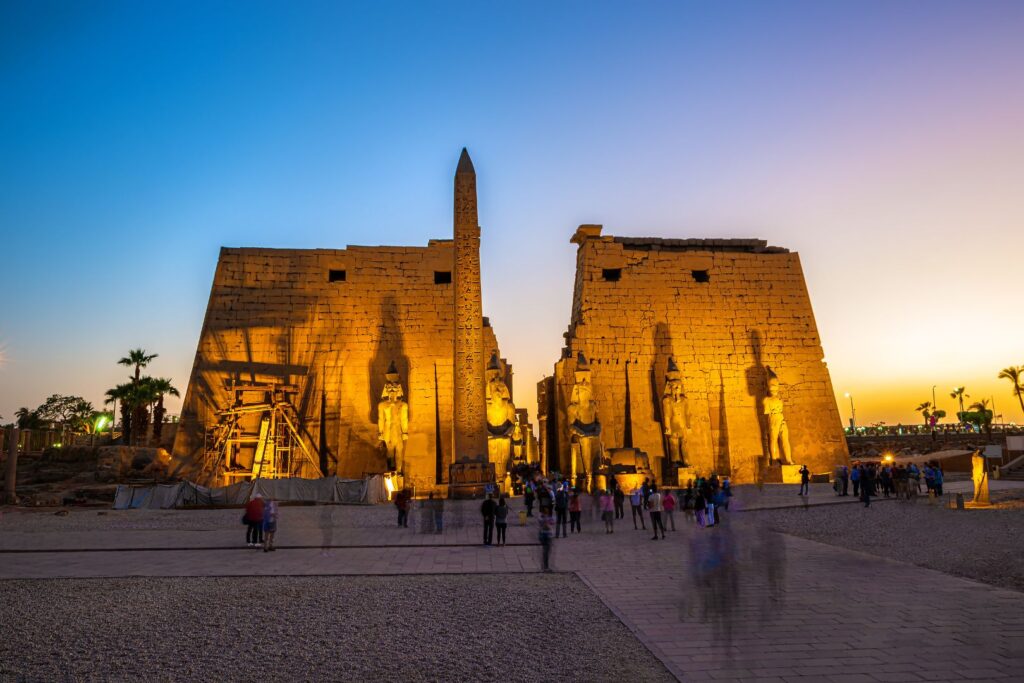
The Luxor Temple, an iconic landmark of ancient Egypt, is situated on the eastern bank of the Nile River in the city of Luxor. Built over centuries by pharaohs such as Amenhotep III, Ramses II, Tutankhamun, and others, Luxor Temple was the most prominent and extensive religious center in ancient Egypt.
Known as “the place of the First Occasion,” Luxor Temple was the site where the god Amon was believed to be reborn during the annual reenactment of the pharaoh’s coronation ceremony. It also served as the venue for ancient Egypt’s most significant religious celebration, the Opet Festival.
Its historical significance lies in the fact that it represents different eras of Egyptian history, from the Pharaonic period to its integration under Roman Rule. Visitors to the temple can witness incredible architectural brilliance, with towering pillars and intricate carvings adorning the walls.
Hatshepsut Temple
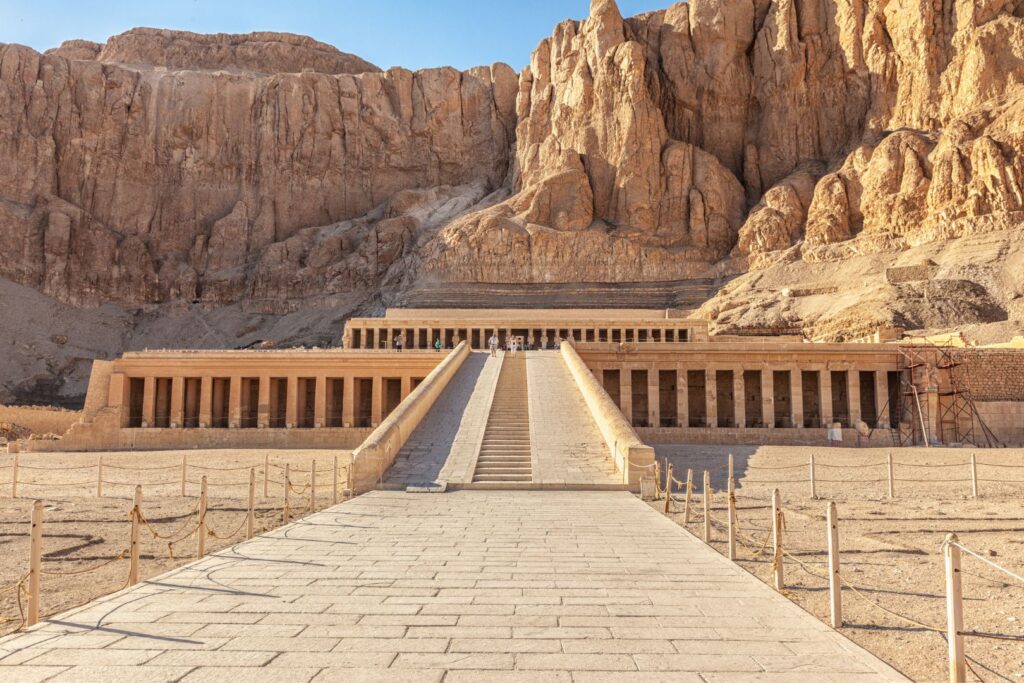
Located at Deir el-Bahri, Hatshepsut Temples makes the list of architectural wonders of Egypt. The temple was built during the Eighteenth Dynasty of Egypt and is a mortuary temple dedicated to the powerful female pharaoh, Hatshepsut. The structure was designed after the mortuary temple of Mentuhotep II, a Theban prince who established the 11th Dynasty.
The visual impact of the temple is unmatched, and it includes sanctuaries to honor the pharaoh. It stands tall along the limestone cliffs behind the Valley of the Kings, narrating ancient Egypt’s history. Hatshepsut is remembered as one of the most prominent female pharaohs in ancient Egyptian history, and her temple showcases her legacy as a great ruler.
Edfu Temple

Located near the city of Esna, the Edfu Temple is dedicated to the God Horus and was built during the period of Ptolemaic rule. It is considered to be one of the best-preserved ancient temple structures of its time.
The walls of the temple depict the battles between Horus and his arch-nemesis and uncle, Seth, as they disputed over who was the divinely appointed ruled of Egypt. Visitors can witness the exquisite artwork, hieroglyphics, and carvings that give us a glimpse into the beliefs, policies, and mythology of the ancient Egyptian civilization. It is a true gem of Egypt’s historical legacy, attracting tourists and scholars alike.
Philae Temple
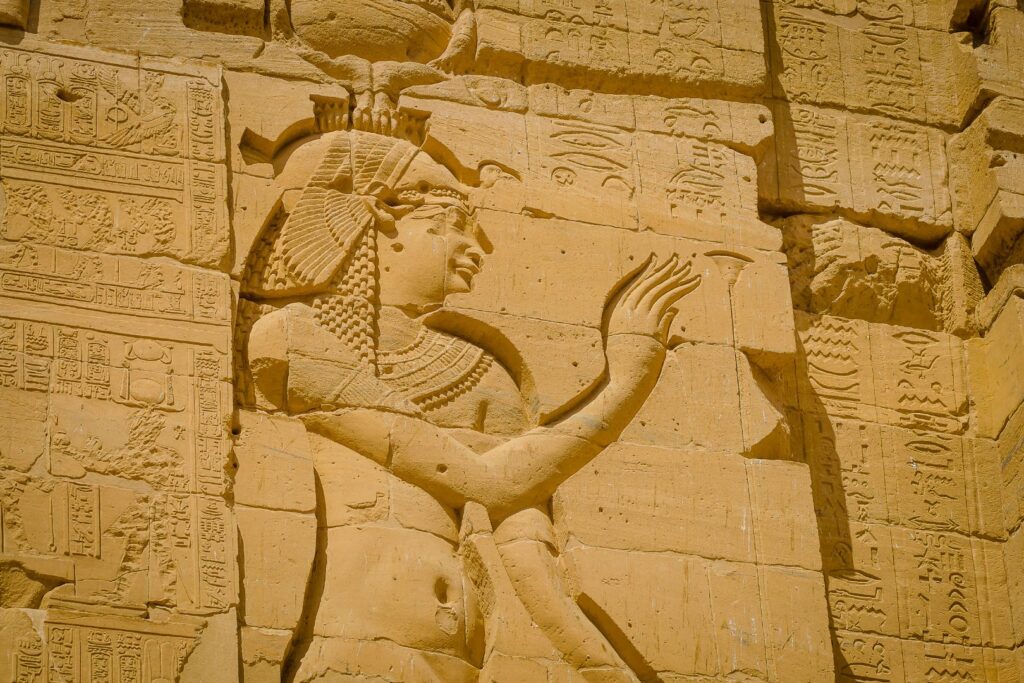
Philae Temple, built on an Island in the Nile River near Aswan was built during the reign of Ptolemy II (Egypt’s Greco-Roman Period) during the 3rd century. The temple walls feature scenes from Egyptian mythology, depicting Isis resurrecting Osiris, giving birth to Horus, and mummifying Osiris following his death. Throughout history, the Philae Temple has been a center of pilgrimage for many who came to pay their respects and seek blessings from the goddess.
Despite its long and tumultuous history, the Philae Temple has managed to survive till today, and it remains an essential piece of Egypt’s rich cultural heritage. Its preserved carvings, exceptional architecture, and captivating aura continue to amaze tourists and history enthusiasts alike who come from far and wide to explore this architectural marvel.
Saqqara
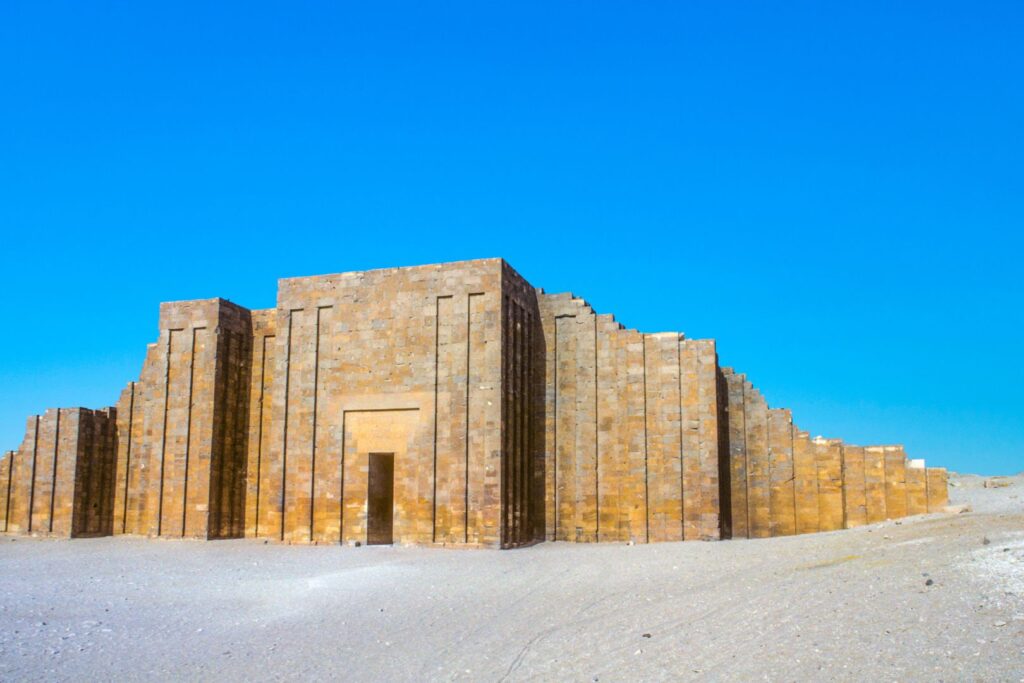
Located near the city of Cairo, this mesmerizing site is a vast ancient cemetery that spans over 7 kilometers. Saqqara is famous for the Step Pyramid of Djoser, which is considered to be the world’s oldest major stone structure.
This historical monument was built for the Pharaoh Djoser, who ruled over Egypt during the third dynasty around 2650 BCE. It is an amazing piece of engineering, showcasing the architectural brilliance of ancient Egypt. Saqqara was used as a burial ground for thousands of years, serving as the final resting place of several Pharaohs and their nobles.
The site is also home to a host of other ancient structures, including temples, tombs, and mastabas. Today, Saqqara stands as a popular tourist attraction, offering visitors a glimpse into the rich history of ancient Egypt.

“Take memories only, leave footprints behind.”
